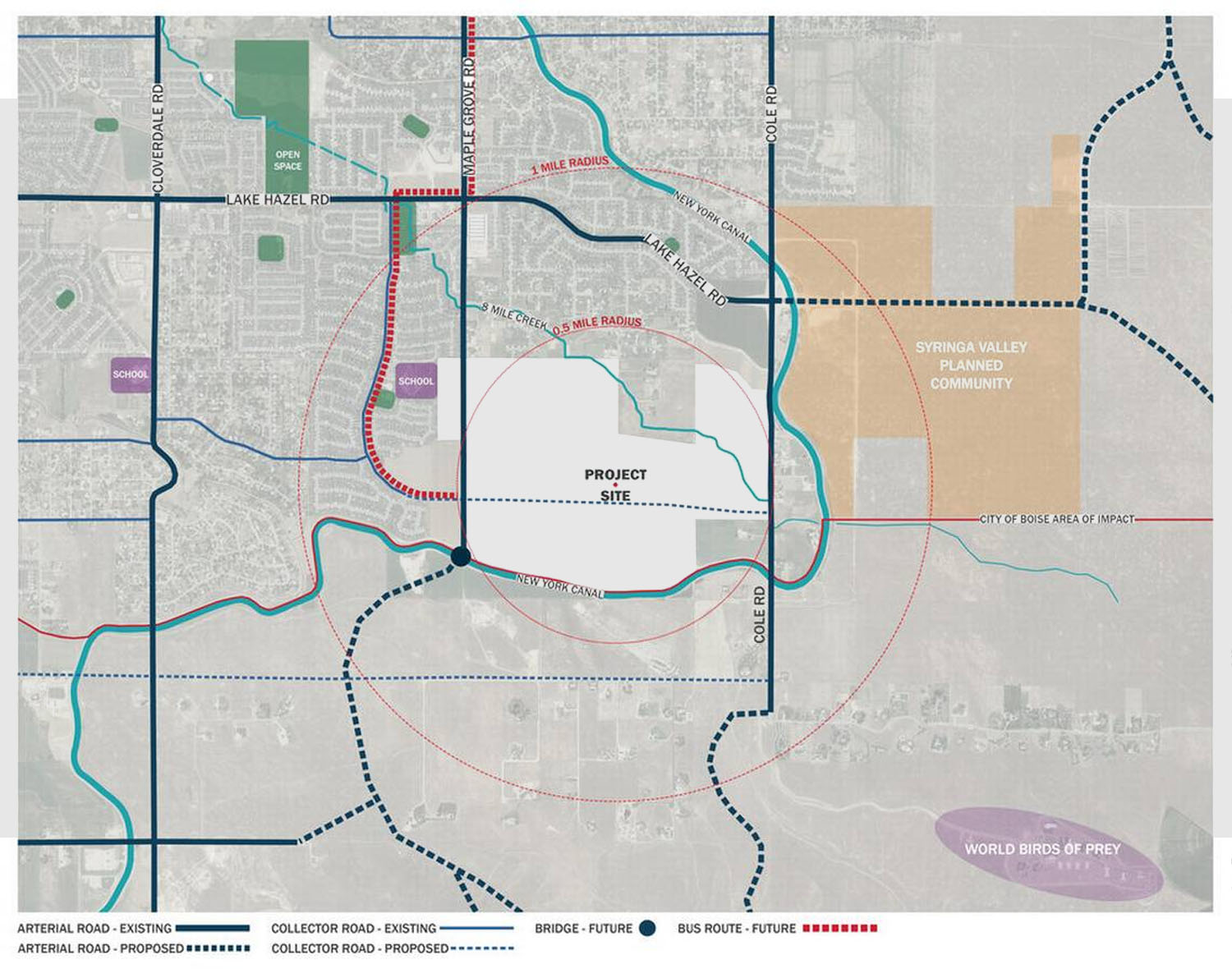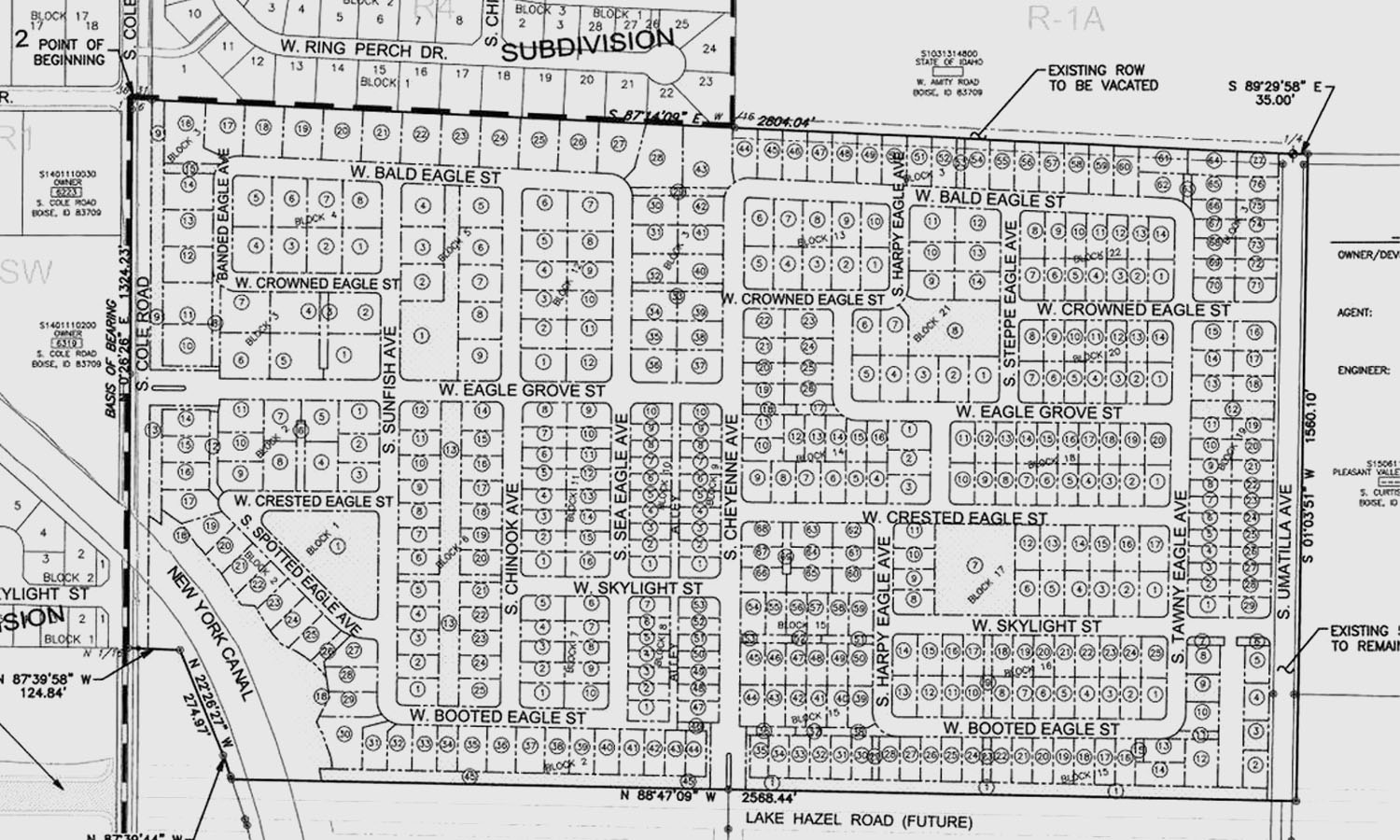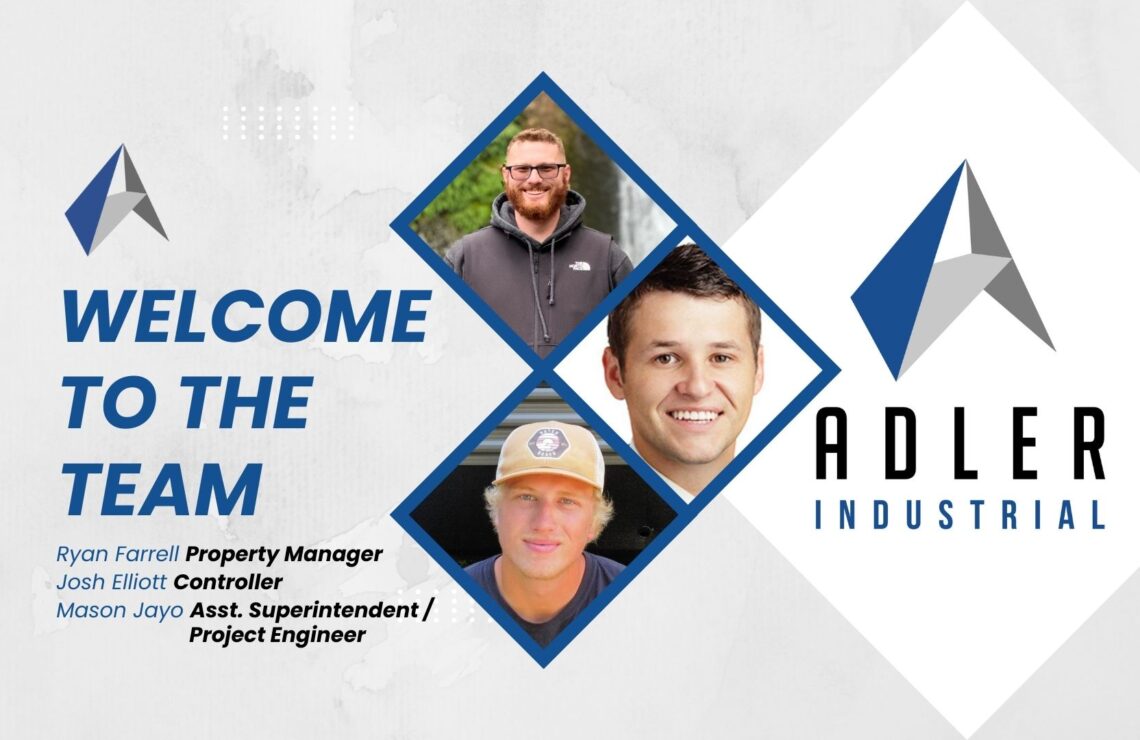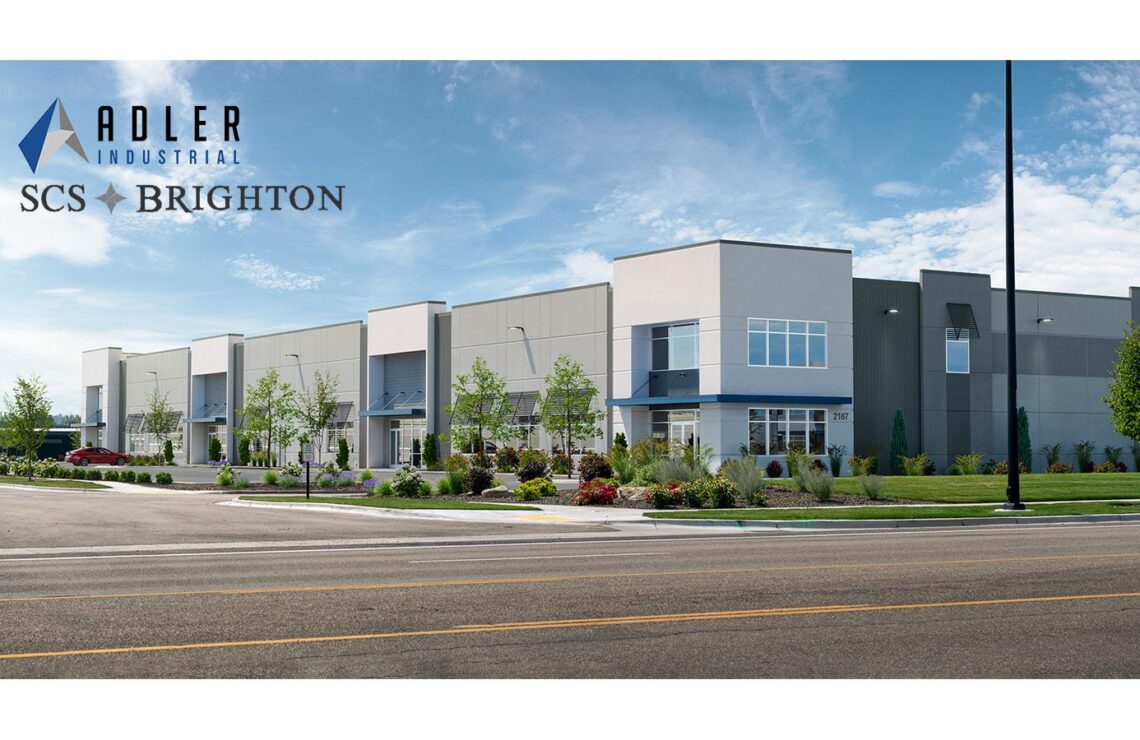Originally published on Idaho Statesman
By John Sowell, December 2, 2021
Amazon opened its giant fulfillment center off Interstate 84 in Nampa last year. The building’s first-floor footprint covers the equivalent of 12 football fields.
A Salt Lake City developer, Gardner Batt, plans a joint venture with Pleasant Valley Industrial Park owners to build a one-story warehouse with an even larger footprint, with seven additional fields’ worth of space within eyeshot of the air traffic control tower at the Boise Airport.
The 1.1 million-square-foot warehouse — 1.35 million when you include its mezzanine — is one big example of what’s to come in the shrub desert south and west of the airport. The area is poised to explode with Boise’s newest growth spurt. Factories, warehouses, stores, hotels, apartments and houses could all be built there.
The developers aren’t saying, but the warehouse appears to be an Amazon project. It even has a code name, Project Dove, just like Amazon. The Nampa warehouse was dubbed Project Bronco.
The Pleasant Valley Industrial Park is a joint venture between Idaho-based Adler Industrial, Ball Ventures Ahlquist, Ball Ventures and Sawtooth Investment Management. It consists of 520 acres of bare land between South Orchard and North Pleasant Valley roads and north of West Lake Hazel Road.
The World Center for Birds of Prey is about three miles south of the site, while the Idaho State Correctional Institution on Pleasant Valley Road is about five miles south. To the east of Pleasant Valley Road and south of Gowen Road is an unused runway that the Boise Airport one day would like to analyze for expansion to handle takeoffs and landings by Idaho Air National Guard planes. The planes currently use the same two runways as commercial flights.
The developers expect the industrial park to combine warehouse use, shops, restaurants, a hotel and possibly a grocery store.
This development and others in the works nearby would fill significant chunks of the undeveloped space between the airport and the mostly unincorporated Southwest Boise neighborhoods to the west that are home to 36,000 people. A portion of the development property has already been incorporated into the city. Before the business park is completed, the entire parcel will be annexed, the developers said.
“It’s got a lot of potential,” Tommy Ahlquist, CEO of Ball Ventures Ahlquist, said in an interview. “It pretty much unlocks South Boise in a lot of ways. There’s always been a lot of households out there, so it’ll be fun to bring jobs closer to where people live and more industry and higher-paying jobs for these folks that live out there.”
Housing already is exploding in Southwest Boise, South Meridian and Kuna. More than 6,000 additional houses are in various stages of discussion or development in Southwest Boise alone, including CBH Homes’ giant Locale development, formerly known as Syringa Valley, south of the planned industrial park.
A map showing the first phase of Locale, a 2,000-home project CBH Homes has started building in Southwest Boise. The development includes the west side of South Orchard Street and along Lake Hazel Road. Provided by city of Boise
“It’s all kind of coming together,” said Ahlquist, who himself is having a house built in Kuna after 22 years of living near the corner of Eagle Road and Chinden Boulevard.
“If you see what Corey Barton (owner of CBH Homes) has done with the Lake Hazel extension and how it ties into Orchard, it really is pretty overwhelming what the possibilities will be out there. It’s been kind of no man’s land for a long time, and it will quickly become what we believe to be the premier business park in South Boise.”
New Growth Headed South of I-84 Near Orchard Street
Between South Orchard and Cole Road along Lake Hazel Road, CBH Homes has begun construction on the 600-acre Locale subdivision, which when completed will have more than 2,000 homes.
It is the most ambitious construction project for CBH, Idaho’s largest home builder. Barton plans a mix of low- and medium-density housing, a village center for community gatherings and commercial and industrial areas. Construction is expected to last 10 to 15 years.
Farther east, Flint Development of Prairie Village, Kansas, plans to build two buildings totaling 897,060 square feet on a 94-acre parcel at 951 E. Gowen Road. One would have 722,640 square feet, with a smaller one with 174,420 square feet.
“The project will be a speculative industrial build, where construction occurs prior to having leases in places with tenants, and is expected to attract a wide range of industrial, technology and logistics companies and their accompanying jobs and economic impact,” Flint Development co-owner Devin Schuster wrote in an application with the city.
The Boise Design Review Committee is scheduled to review the Flint Development application at 6 p.m. on Wednesday, Dec. 8 at City Hall, 150 Capitol Blvd.
The Boise City Council recently approved plans by Amazon to rent 3½ acres of land at the Boise Airport to build a 31,000-square-foot air cargo building to store and distribute the e-commerce giant’s goods. That could also benefit the Pleasant Valley development, Ahlquist said.
“Every time a new business opens up in an area, it provides business for other businesses,” Ahlquist said. “There’s a need for support for that business. They’re going to need additional services and they’re to be provided.”
Two miles the west of the airport, Boise is considering turning the site of a once-promised but never developed park in a still-unincorporated area as a site for housing, including affordable housing. Immediately west of Locale, property owners, who include the Murgoitio family and Don Hubble of Hubble Homes, have applied to build Murio Farms, a planned community that could have about 3,000 homes.

California Company Moved, Became Boise’s Largest Commercial Developer
Adler Industrial became the Treasure Valley’s largest industrial real estate development and management company after acquiring more than 80 properties between Boise and Nampa from Van Auker Cos. of Meridian in 2019. Adler, which was founded nearly 30 years ago, was based in Woodland Hills, California, before moving to Meridian in 2018.
It has developed or acquired 3.7 million square feet of industrial buildings in Boise, Meridian and Nampa in the past four years, while selling a number of older properties, Adler Industrial CEO Mike Adler said in an interview. It has built a dozen buildings this year.
Adler Industrial hopes to begin work this winter on its building, which is being built speculatively. Neither developer has signed any clients to a contract. Adler said he is talking with a couple of potential tenants.
Adler is adding utilities and other infrastructure to the site. The warehouse is planned for the northeast side of the property, toward Pleasant Valley Road. Construction could begin next spring.
Outside the warehouse, plans call for 98 docks for loading semi-trucks — two fewer than at Amazon — 390 parking spaces for trailers, along with 700 parking spaces for employees’ cars and two guard shacks.
Twenty-one smaller buildings, ranging from 50,000 square feet to 430,000 square feet, would also be part of the industrial development.
“There’s warehouse and distribution businesses that would be occupying buildings,”, Adler said. “And a lot of businesses that service other businesses in the Boise area, from air conditioning supply-type businesses to food distribution businesses to internet fulfillment and delivery technology.”
The smaller buildings would be located on the southern portion of the property, with the smallest ones placed along South Orchard Street. They would have the least impact on the neighborhood that will form to the west across Orchard as the Locale development is built, Adler said. Those buildings would generate little traffic.
“What we try to do is make sure these type of uses don’t affect traffic patterns for residential areas,” he said.
Ball Ventures Ahlquist, which has built a number of office complexes, including Ten Mile Crossing off I-84 at Meridian, Pioneer Crossing in downtown Boise and Barber Station on Parkcenter Boulevard in Boise, will handle development of the commercial sites clustered along the northwest portion of the property along South Orchard.
Lake Hazel Road, which currently ends on the east portion as it rounds a corner and turns into South Orchard going north, will be extended southwest through the property. South Orchard, which ends south of the Boise Airport at West Gowen Road before picking up again a short distance west, will be reconfigured to provide more direct access to the property.
Development Will Take Years to Finish
It will take several years to complete the project. Adler and Ahlquist do not have a precise timetable.
“Like any large project it will take time to to bring everything together, and we’ll be growing along with the area,” Ahlquist said. “As as needs arise, we’ll be providing the product to serve those needs.”
Neither developer believes the ongoing coronavirus pandemic will hurt plans for the business park.
“On the industrial real estate side, the pandemic helped our business quite a bit,” Adler said. “A lot of businesses had to shift from direct selling on a retail basis to warehouse-and-delivery, where you’re buying things online. They’re being shipped directly from a warehouse to the consumer, rather than from a warehouse to a retailer to the consumer.”
As a result, many retail-oriented companies were forced to expand their industrial footprint. And while many offices emptied as workers were sent home to work, many manufacturers stayed and continued to produce their products as demand remained strong, he said.
Ahlquist said he didn’t lose any clients during the pandemic. While many companies sent workers home, offices have begun to rebound.
“There are some businesses where their employees can be self-directed and work from home, and that works well,” Ahlquist said. “But there’s a whole bunch of others that need the collaboration, that human interaction, to make things work, so we have not seen any slowdown in office or any of our tech clients.”
Financing, which dried up after the Great Recession of 2008, has remained strong this time, he said.
“There’s a lot of outside money in our valley,” he said. “There’s a lot of people that are coming in with lots of money to do things, and there’s no no shortage of buyers in this market right now.”
Land prices have gone up significantly in the past few years, Adler said. With median house prices rising to record levels over much of the past three years and dwindling land available, commercial developers are often competing with home builders for parcels, especially for land that could be used for multifamily developments.
“A few years ago, you were paying between 70 cents to $1 to $1.50 per square foot for larger tracts of good development land,” Adler said. “Today, you might be paying $8 a square foot.”
Industrial rents are the lowest for any kind of development, he said.
“Industrial users want cheap space — that’s all they want,” Adler said. . “That’s why we end up behind airports, or in an area where nobody wants to live, or next to a railroad track, or between a railroad track and a freeway.”





